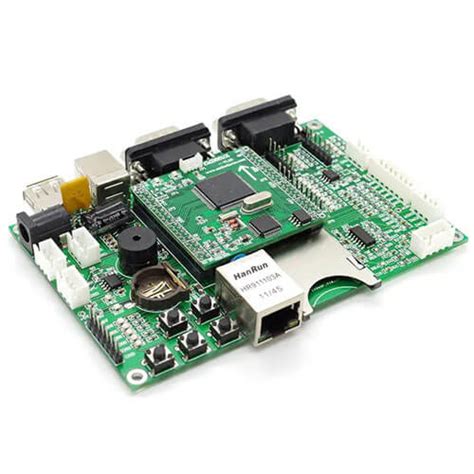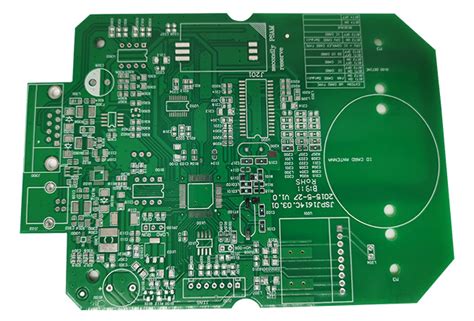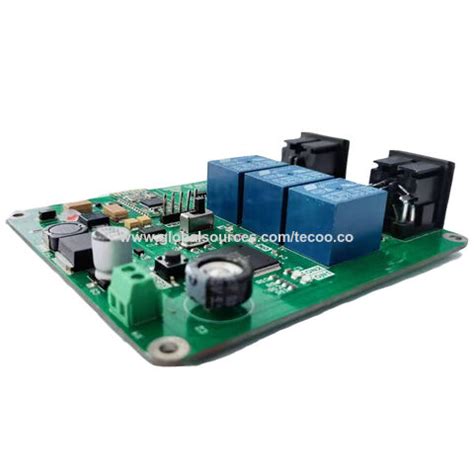Advanced Printed Circuit Assembly Services for Critical Systems
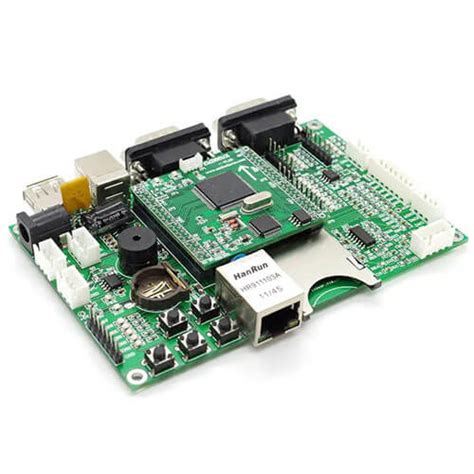
Key Takeaways
Modern PCB assembly processes form the backbone of mission-critical systems across industries like aerospace, medical technology, and defense. Central to these services is the integration of IPC/ISO-certified manufacturing, which guarantees adherence to stringent quality benchmarks for high-reliability applications. PCBA solutions tailored for critical environments prioritize zero-tolerance defect rates, leveraging advanced techniques such as automated optical inspection (AOI) and X-ray testing to validate component integrity.
For sectors where operational failure is not an option, rigorous quality control protocols ensure traceability and compliance with medical-grade or military standards. This includes thermal cycling tests to simulate extreme conditions and functional testing to verify performance under load. By optimizing PCB assembly workflows—from solder paste application to final inspection—manufacturers achieve the precision required for avionics, life-support devices, and secure communication systems.
The convergence of high-reliability PCBA with defense-specific requirements further underscores the importance of supply chain resilience and counterfeit component mitigation. These practices, combined with real-time data monitoring during production, create a foundation for systems that perform flawlessly in the most demanding scenarios.

Precision PCB Assembly for Critical Systems
Modern PCB assembly processes for critical systems demand unparalleled accuracy to meet the rigorous standards of industries like aerospace, defense, and medical technology. PCBA (printed circuit board assembly) providers specializing in these sectors employ ultra-precise placement machinery, high-performance soldering techniques, and materials engineered for extreme environments. For example, aerospace-grade assemblies often require:
| Feature | Standard PCBA | Critical Systems PCBA |
|---|---|---|
| Material Tolerance | ±5% | ±0.1% |
| Operating Temperature | -20°C to 85°C | -55°C to 150°C |
| Testing Coverage | 85-90% | 99.99% |
| Certification | IPC Class 2 | IPC Class 3/ISO 9001 |
"In mission-critical applications, a single micron-level deviation can cascade into system failure. This is why traceability and process validation are non-negotiable in PCB assembly for defense or medical devices." — Quality Assurance Director, Tier-1 Electronics Manufacturer
To ensure reliability, advanced PCBA workflows integrate automated optical inspection (AOI) and X-ray verification to detect microscopic defects. For medical implants, biocompatible conformal coatings and hermetic sealing prevent corrosion in bodily fluids.
Tip: When sourcing PCB assembly services for critical systems, verify the provider’s expertise in thermal cycling tests and vibration resistance validation — both essential for aerospace and military applications.
Transitioning from design to production requires close collaboration between engineers and PCBA specialists to optimize layouts for manufacturability without compromising performance. This synergy ensures that rigid-flex boards, high-density interconnects, and embedded components meet the exacting demands of life-saving or national security technologies.
IPC/ISO-Certified Circuit Board Manufacturing
Adherence to IPC/ISO-certified standards is foundational for producing PCB assembly solutions that meet the exacting demands of critical industries. These certifications validate rigorous protocols across design validation, component sourcing, and assembly processes, ensuring traceability and consistency in every PCBA unit. By aligning with IPC-A-610 (Acceptability of Electronic Assemblies) and ISO 9001 quality management systems, manufacturers guarantee that microscopic solder joints, layer alignment, and thermal management adhere to globally recognized benchmarks.
Certified facilities employ automated optical inspection (AOI) and X-ray testing to detect defects at sub-millimeter scales, while cross-functional teams oversee material compatibility and electrostatic discharge (ESD) controls. Such precision is vital for applications requiring ultra-low failure rates, such as avionics or implantable medical devices. The integration of IPC/ISO-certified workflows also ensures documentation integrity, enabling full lifecycle traceability—a non-negotiable requirement for sectors like defense or aerospace.
By prioritizing these standards, PCB assembly providers bridge the gap between complex design specifications and real-world reliability, delivering boards capable of enduring extreme temperatures, mechanical stress, and prolonged operational cycles. This commitment to certified excellence not only mitigates risk but also accelerates time-to-market for mission-critical systems.
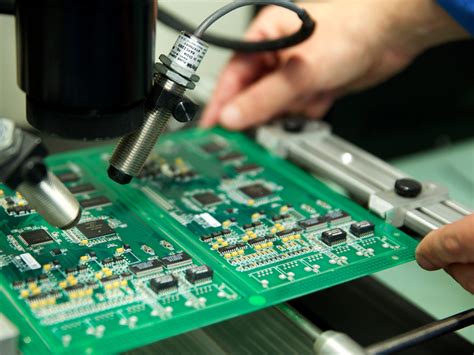
High-Reliability PCB Assembly Solutions
In industries where system failure is not an option, PCB assembly processes must adhere to uncompromising standards. High-reliability PCBA solutions prioritize zero-defect manufacturing through advanced techniques such as automated optical inspection (AOI), X-ray inspection, and thermal cycling tests. These processes ensure that every circuit board meets stringent performance criteria, particularly for applications in aerospace, medical implants, and military hardware, where environmental stressors like extreme temperatures, vibration, and humidity are routine.
To achieve mission-ready durability, manufacturers employ specialized materials, including high-temperature laminates and conformal coatings, while adhering to IPC-A-610 Class 3 standards for solder joint integrity. Traceability is critical; each component’s origin and assembly parameters are meticulously documented to support lifecycle management and compliance audits. Furthermore, rigorous functional testing simulates real-world operating conditions, validating signal integrity and power distribution under load.
By integrating DFM (Design for Manufacturability) principles early in the development cycle, PCBA providers minimize risks of latent defects, ensuring seamless interoperability with other subsystems. This proactive approach, combined with cross-functional collaboration between engineers and quality assurance teams, guarantees that end products withstand decades of operation in the harshest environments.
Advanced Electronics for Aerospace & Defense
The development of PCB assembly solutions for aerospace and defense applications demands unparalleled precision and adherence to stringent performance standards. These industries require high-reliability PCBA that can withstand extreme conditions, from suborbital environments to battlefield operations. Manufacturers leverage IPC-610 and MIL-STD-883 compliance to ensure boards meet rigorous mechanical, thermal, and electrical specifications. Advanced printed circuit assembly services integrate radiation-hardened components, conformal coatings, and multilayer designs to address challenges like electromagnetic interference (EMI) and thermal stress.
For defense systems, PCBA reliability directly impacts mission success. This necessitates zero-defect manufacturing workflows, including automated optical inspection (AOI) and X-ray testing, to detect micro-cracks or solder joint imperfections. Additionally, supply chain traceability ensures components meet ITAR and EAR regulations, critical for safeguarding national security interests. By combining advanced materials with IPC-certified assembly processes, engineers achieve the durability and signal integrity required for avionics, radar systems, and encrypted communication devices. Such innovations ensure seamless integration into next-generation platforms while maintaining backward compatibility with legacy systems.
Medical-Grade PCB Assembly Standards
In the realm of medical electronics, PCB assembly demands adherence to stringent regulatory and performance benchmarks. Medical devices—from implantable sensors to diagnostic equipment—require high-reliability PCBA solutions that prioritize patient safety and operational consistency. Compliance with standards such as ISO 13485 and IPC-A-610 Class 3 ensures traceability, defect-free manufacturing, and compatibility with sterilization processes.
Critical to medical-grade PCB assembly is the integration of biocompatible materials and precision soldering techniques to prevent contamination or failure in sensitive environments. For instance, substrates must withstand repeated thermal cycling, while solder joints require microscopic inspection to meet sub-millimeter tolerances. Additionally, manufacturers employ cleanroom protocols to eliminate particulate contamination during PCBA production, a non-negotiable requirement for devices used in surgical or implant applications.
Rigorous testing frameworks, including automated optical inspection (AOI) and in-circuit testing (ICT), validate electrical performance and mechanical integrity. These steps are vital for devices like pacemakers or MRI systems, where even minor flaws can compromise functionality. By aligning with global medical device regulations, PCB assembly providers ensure compliance while enabling innovations in telemedicine, wearable health tech, and robotic surgery platforms.
Rigorous Quality Control in PCB Production
Modern PCB assembly processes demand uncompromising quality protocols to meet the exacting requirements of mission-critical environments. At the heart of PCBA manufacturing lies a multi-layered inspection framework, combining automated optical inspection (AOI), X-ray analysis, and functional testing. These steps ensure compliance with IPC-A-610 standards for solder joint integrity and component placement accuracy, while ISO 9001 certification guarantees traceability across every production batch.
Advanced systems leverage statistical process control (SPC) to monitor variables like solder paste deposition and reflow profiles, minimizing deviations before they impact yield. For high-reliability sectors such as aerospace or medical devices, environmental stress screening (ESS) simulates extreme operating conditions—from thermal cycling to vibration exposure—to identify latent defects. Cross-functional teams also conduct failure mode and effects analysis (FMEA) to preempt risks in design-for-manufacturability (DFM) reviews.
Transitioning seamlessly into final validation, PCB assembly partners employ boundary-scan testing and in-circuit testing (ICT) to verify electrical performance against design specifications. This zero-defect mindset not only aligns with MIL-PRF-31032 and AS9100 standards but also ensures that PCBA outputs meet the lifecycle demands of defense systems and implantable medical devices. By embedding quality at every stage, manufacturers safeguard functionality in applications where reliability is non-negotiable.

Mission-Critical PCB Testing & Inspection
For mission-critical applications in aerospace, medical, and defense systems, PCB assembly (PCBA) reliability hinges on rigorous testing and inspection protocols. This phase ensures that every component meets zero-defect thresholds required for high-stakes environments. Advanced techniques like automated optical inspection (AOI) and X-ray inspection validate solder joint integrity, component alignment, and layer-to-layer connections, while functional testing simulates real-world operating conditions to identify latent failures.
In high-reliability PCBA, environmental stress screening—including thermal cycling and vibration testing—mimics extreme conditions to uncover weaknesses before deployment. These protocols align with IPC-610 Class 3 and ISO 9001 standards, ensuring compliance with aerospace and medical device regulations. Additionally, electrical continuity checks and in-circuit testing (ICT) verify signal integrity and power distribution accuracy, critical for systems where downtime is not an option.
By combining automated and manual inspection workflows, manufacturers achieve traceability across every production batch, documenting defects at micron-level precision. These layers of scrutiny not only safeguard against field failures but also optimize defense-grade PCB assemblies for longevity in harsh operational environments.
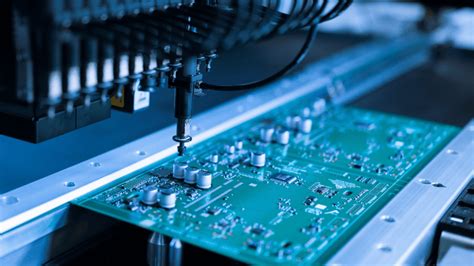
Optimizing Performance for Defense Systems
In defense applications, PCB assembly processes must meet uncompromising standards to ensure operational readiness under extreme conditions. Advanced thermal management techniques and signal integrity validation are critical when designing PCBA solutions for radar, communication, and guidance systems. Manufacturers leverage high-density interconnect (HDI) technologies to minimize component footprint while maximizing processing power, essential for modern battlefield electronics.
To withstand harsh environments, defense-grade assemblies incorporate military-specification components rated for extended temperature ranges (-55°C to 125°C) and resistance to shock, vibration, and humidity. Conformal coating applications, aligned with IPC-CC-830 standards, provide additional protection against corrosion and contaminants. Rigorous MIL-STD-810 testing protocols validate performance across electromagnetic interference (EMI) scenarios and altitude variations, ensuring compliance with defense contracting requirements.
Collaboration between PCB assembly engineers and system integrators is vital to balance power efficiency with computational demands. Automated optical inspection (AOI) and X-ray imaging detect micro-defects in solder joints, while functional testing replicates real-world stressors. By integrating failure mode analysis during prototyping, manufacturers preemptively address potential vulnerabilities, delivering PCBA solutions that meet the zero-fault tolerance mandate of mission-critical defense platforms.
Conclusion
In mission-critical industries where performance and safety are non-negotiable, partnering with a trusted provider for PCB assembly (PCBA) becomes paramount. Advanced PCBA solutions bridge the gap between design intent and operational reality, ensuring that aerospace, medical, and defense systems meet zero-tolerance thresholds for failure. By adhering to IPC/ISO-certified processes, manufacturers guarantee traceability, repeatability, and compliance with stringent regulatory frameworks. Rigorous quality assurance protocols, including automated optical inspection (AOI) and functional testing, validate every layer of assembly—from component placement to final solder integrity. As industries evolve toward miniaturized, high-density designs, the integration of high-reliability electronics demands expertise in thermal management, material selection, and failure-mode analysis. Ultimately, the success of mission-critical applications hinges on aligning technical precision with scalable production methodologies, ensuring that every assembled circuit meets the exacting demands of its operational environment.
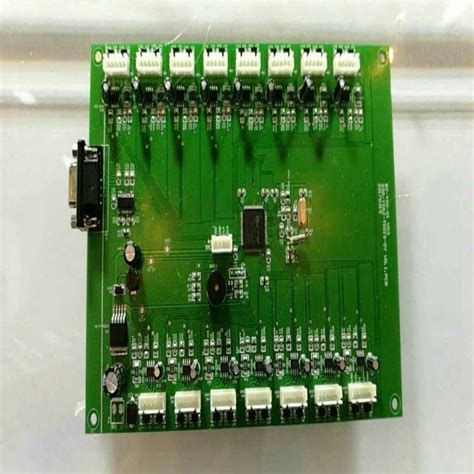
FAQs
What distinguishes high-reliability PCB assembly for aerospace applications?
PCBA processes for aerospace demand adherence to IPC-610 Class 3 standards, ensuring components withstand extreme temperatures, vibrations, and radiation. Rigorous testing, including thermal cycling and shock resistance evaluations, guarantees performance in mission-critical environments.
How does medical-grade PCB assembly differ from commercial practices?
Medical PCBA requires ISO 13485 certification and biocompatible materials to meet FDA guidelines. Enhanced traceability protocols and contamination controls ensure compliance with sterile environments, prioritizing patient safety and device longevity.
What quality controls are applied to defense-focused PCB assembly?
Defense systems utilize MIL-STD-883 testing, automated optical inspection (AOI), and X-ray verification to detect micro-defects. PCBA workflows integrate encrypted data handling and tamper-proof packaging to safeguard sensitive applications.
Why is material selection critical for PCB assembly in harsh environments?
High-performance substrates like polyimide or ceramic-based laminates enhance thermal stability and moisture resistance. These materials, paired with conformal coating, extend the lifespan of PCBA in military or industrial systems.
How do certifications like IPC and ISO impact PCB assembly reliability?
IPC-A-600 and ISO 9001 certifications validate process consistency, from solder joint integrity to component placement accuracy. Audited facilities ensure traceability, reducing failure risks in critical applications.
Custom Solutions for Your Project Needs
For tailored PCB assembly services meeting aerospace, medical, or defense requirements, please click here to consult our engineering team.

